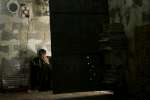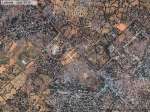UNHCR Statistical Online Population Database: General Notes
UNHCR Statistics, 2013
General Notes
The UNHCR Statistical Online Population Database summarizes changes in global trends and levels of the population of concern to UNHCR: refugees, asylum-seekers, returned refugees, internally displaced persons (IDPs) protected/assisted by UNHCR, returned IDPs, stateless persons, and others of concern to UNHCR. The information, reported by UNHCR country offices, generally reflects the data of the host country.
In the absence of official refugee population figures, UNHCR has estimated the refugee population in 25 industrialized countries based on the individual recognition of refugees over a 10-year period. These 25 countries are Australia, Austria, Bulgaria, Canada, Denmark, Finland, Greece, Hungary, Iceland, Ireland, Italy, Liechtenstein, Luxembourg, Malta, the Netherlands, New Zealand, Norway, Poland, Portugal, Romania, Spain, Slovakia, Sweden, the United Kingdom and the United States of America. Data prior to 2007 also includes refugees who have arrived under resettlement programmes.
The UNHCR mandate covers all refugees, except some 4.9 million Palestinian refugees residing in areas of operation of the United Nations Relief and Works Agency for Palestinian Refugees in the Near East (UNRWA). These Palestinian refugees are not included in UNHCR's statistics. However, the Palestinian refugees living outside the UNRWA areas of operation fall under the responsibility of UNHCR and are thus included in UNHCR statistics.
The database is work-in-progress and will be updated on an ongoing basis. Currently, data up to 31 December 2012 can be downloaded from the Statistical Online Population Database. Some of the statistics contained in the Statistical Online Population Database, in particular the ones for 2012 should be considered provisional and subject to change. Some data in the database may differ from statistics published previously due to retroactive changes or the inclusion of previously unavailable data.




























